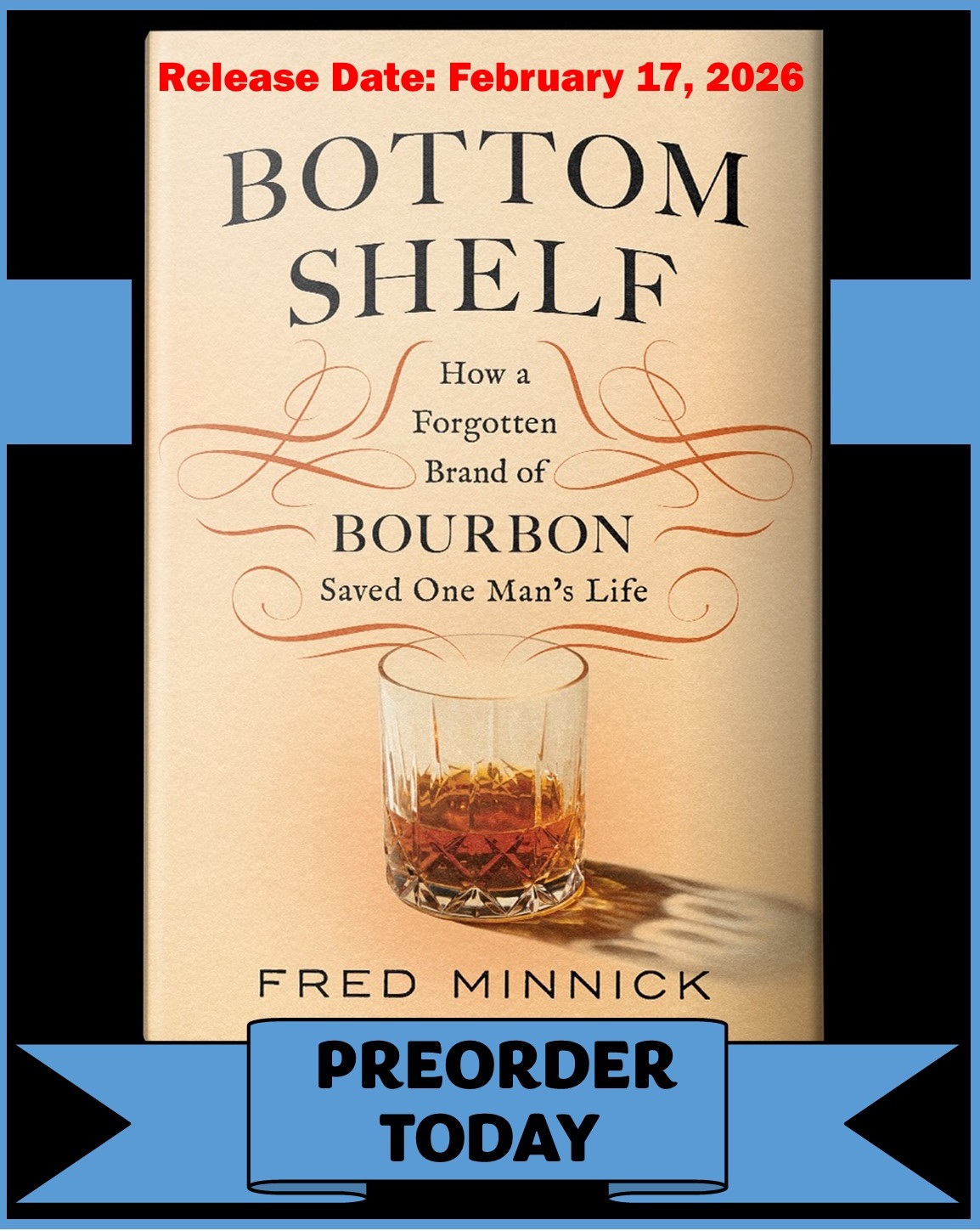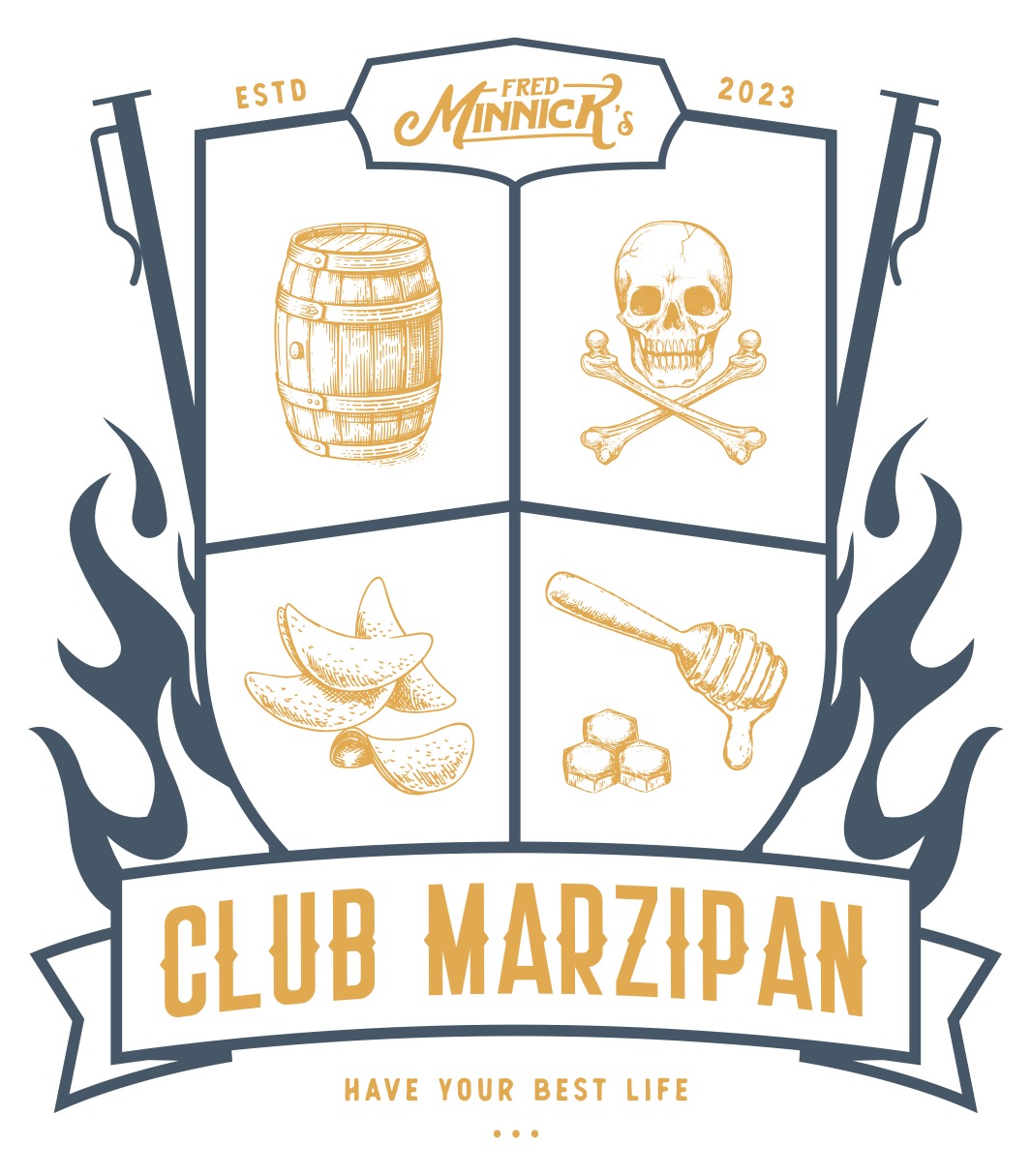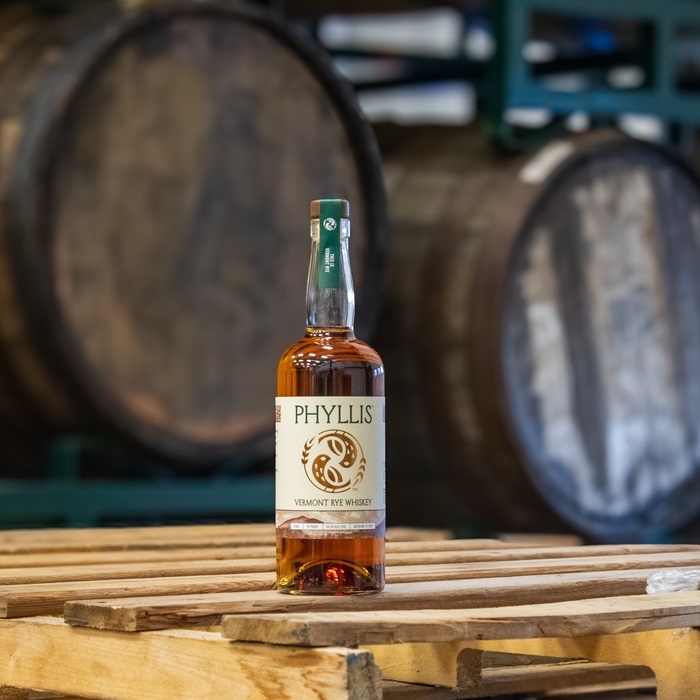Greatness Retires: Rutledge Leaves Four Roses, Bashes Flavored Whiskey
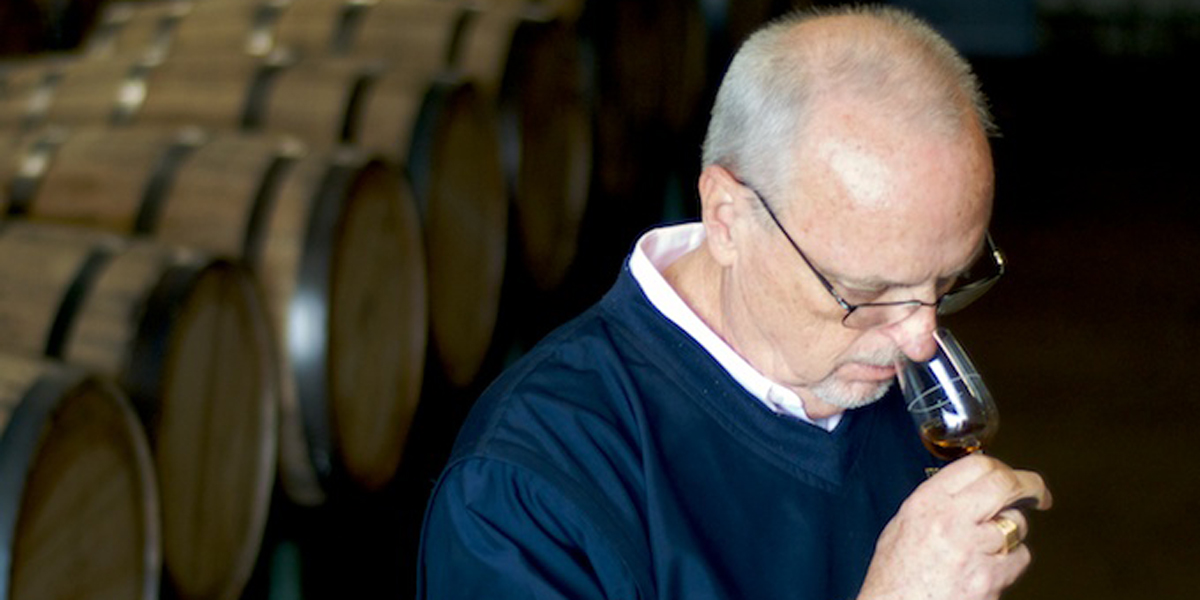
As I stood inside the truck, fresh bourbon barrels to my left and right, I pointed my Nikon and the 180-mm lens toward a man in a moment. I asked Four Roses master distiller Jim Rutledge to connect with the bourbon, directing him as I would a fashion model, in an effort to find art with a man and his bourbon. In the background, crews were rolling barrels, popping bungs and draining brown liquor. I’ll never forget the Four Roses dump sounds, and I’ll never forget Rutledge, 71, acting as if nothing else mattered but taking in the aroma of his single
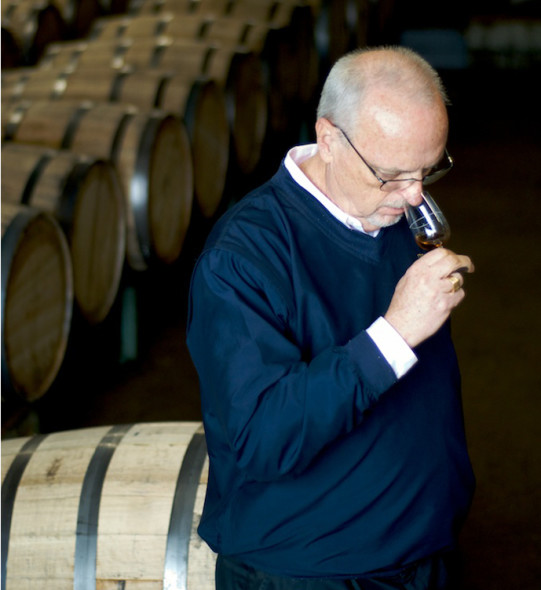
glass of bourbon. I captured his moment with a single shutter click, and he’d later tell me that was the best photo anybody had ever taken of him.
Rutledge may have told every photographer that, but photographing Jim Rutledge was always easy for a simple reason—passion. The man lived, breathed and bled bourbon.
Four Roses announced Rutledge’s retirement yesterday effective Sept. 1. Brent Elliott replaces him with a glowing endorsement from Rutledge. (Note: If you received this post yesterday through my redesigned site–not yet published–sorry for the tech. glitch, but the story is updated with new information.)
His next steps include a Four Roses master distiller emeritus role and consulting.
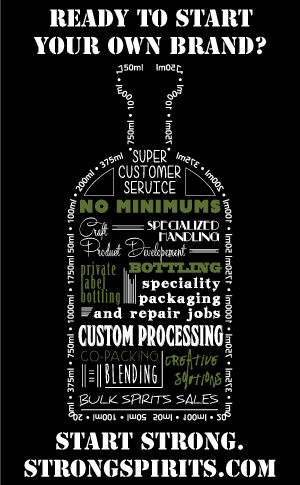 In a phone interview, Rutledge told me he hopes to offer his expertise to distillery startups and would not rule out consulting for the larger brands. But he could not promote another brand. “I’d feel bad promoting another brand after spending my life with Four Roses,” he told me. “I’ll keep the door open for consulting, but won’t sign exclusivity contracts.”
In a phone interview, Rutledge told me he hopes to offer his expertise to distillery startups and would not rule out consulting for the larger brands. But he could not promote another brand. “I’d feel bad promoting another brand after spending my life with Four Roses,” he told me. “I’ll keep the door open for consulting, but won’t sign exclusivity contracts.”
Over the years, in my various interviews with Rutledge, he’s ripped the flavored whiskey market, saying that Four Roses will not make one while he’s still master distiller. I asked him if there were plans of a Four Roses flavored whiskey. He responded: “I hope not and I won’t work for anybody who is making flavored whiskey. It’s destroying the integrity of the industry. I hope Four Roses sticks to what I believe so strongly in.”
Me, too. Rutledge worked at Four Roses / Seagram for 49 years.
It’s hard to imagine the distillery without him. It’s hard to imagine bourbon without him. Last year, Whisky Magazine published my story “One Man’s Yeast Quest.” It’s fitting I republish this story today.
One Man’s Yeast Quest
The story of Four Roses’ master distiller and his beloved yeast strains.
This story originally appeared in Whiskey Magazine
Standing over five unique Four Roses bourbon samples, a photographer wandering around him, master distiller Jim Rutledge caresses the edge of a single glass and silently reflects about the whiskey. This man’s passion for this bourbon, his bourbon, exceeds just about every other Kentucky distiller’s. And for good reason.
A long-time Seagram’s employee, Rutledge made Four Roses bourbon for other countries. Liquor giant Seagram’s took Four Roses off of American shelves in the late 1950s and focused on foreign markets, giving its sexier Crown Royal a King’s treatment in American liquor stores. Rutledge tried to bring his beloved Four Roses bourbon back, while the rotgut Four Roses blended whiskey demolished the legendary bourbon name. Rutledge even attempted to buy Four Roses himself, but as he says, “we didn’t get to first base.”
Then, in 2001, Seagram’s folded and Four Roses’ current parent company, Kirin, purchased Four Roses. Since then, Four Roses has been a beacon of old school bourbon hope, creating mind-blowing whiskeys that sweep magazine and competition awards. Rutledge has spent much of his time talking about Seagram’s snafu, but it’s time to move on from that story.
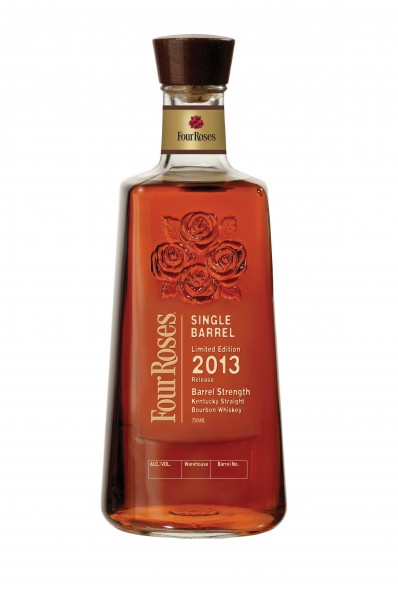 Four Roses is no longer the brand that Seagram’s forgot; it’s the brand Rutledge and Four Roses ambassador Al Young have built.
Four Roses is no longer the brand that Seagram’s forgot; it’s the brand Rutledge and Four Roses ambassador Al Young have built.
Ironically, Four Roses’ unique flavour profiles all hinge upon Seagram’s incredible yeast library, an Ecuadorian named Jose Pueblo and Seagram’s theories on meeting target flavour profiles.
Old School Seagram’s
Starting in 1945, when making Four Roses, Seagram’s used 10 unique flavours of bourbon to reach its target formula—two grain recipes with the V yeast distilled at Seagram’s five Kentucky distilleries—Old Prentice (now Four Roses), Cynthiana, Fairfield, Athertonville and Calvert.
Since every barrel yields different whiskey, Seagram’s theory was having 10 variations would help achieve consistency. Some barrels might be older, but it would average out when all whiskey mingled for bottling what would now be considered the Yellow Label.
But Seagram’s began downsizing its Kentucky operations in the 1960s, closing distilleries one by one, and forcing Four Roses to find another flavour source to stay within the company’s flavour strategy.
“When Seagram’s closed a distillery, we’d go to R&D for a yeast strain to replace that missing flavour, the distillery’s water source,” Rutledge says.
And that’s where Pueblo comes in.
Pueblo milled, mashed and cooked a variety of grains, alternating more than 300 yeast strains in experimental fermentations. Pueblo was always playing with the yeast, mutating one strain or another, until he generated something desirable.
“Pueblo started in R&D six to eight months before I started {November 14, 1966}. He spent his entire career working with the fermentation and yeast,” Rutledge says. “Seagram’s R&D had a miniature small distillery operation that would be the envy of most of craft distillers. … He would allow a yeast to mutate, stop the mutation, and then he would run it through a miniature distillery. We’d go through all the cycles of distillation. And then, we would evaluate.”
When Seagram’s closed the Louisville-based Calvert facility in 1983, Four Roses consisted of two grain recipes with five yeasts distilled in Lawrenceburg, Kentucky, allowing the brand to stay within Seagram’s 10 flavour target methodology.
All five yeasts were generated from the V yeast, the light grandpa or great, great grandma of F, K, O and Q yeasts. Today, Four Roses boasts 10 recipes—the two mashbills and five yeasts—that have become the hallmark for legions of bourbon consumers. But it never would have happened without Seagram’s business decisions and a savvy R&D department.
Rutledge says R&D created more than 3,500 yeast strains, but only retained 10 per cent. He doesn’t know what happened to them all when Seagram’s went out of business, but Rutledge and his colleagues rushed in a frozen state to keep his yeast alive.
Frozen State
In the final decade of Seagram’s existence, the company moved Four Roses’ five yeasts to Louisville, Baltimore and Montreal. When the company folded, Four Roses rushed to find the yeast a new home. The company found a temporary home at Alltech, the agricultural conglomerate in Lexington, Ky., that now makes whiskey.
Four Roses then discovered White Laboratories in San Diego, where its yeasts are now kept in a freeze-dried state.
Today, the San Diego lab overnights the yeast strains to Lawrenceburg, where it arrives with a white coating on top of it. The Four Roses lab inoculates a 500-milliliter flask and places it in a refrigerator, where the yeast grows for 24 hours. From here, a jug is inoculated.
“It takes us another 24 hours for that yeast to grow and then we’ll have a sufficient amount of yeast to inoculate a dona tub, which is about a 150-gallon tub situated above our three yeast tanks. That takes another 24 hours. So, we have three days of growing yeast in a lab, a jug and a dona tub. Then we have a sufficient amount to inoculate a yeast tub,” Rutledge says.
At the end of three days, the distillery inoculates a yeast tub and measures the sugar content. When it’s at 60 per cent of the original sugar content, Four Roses will stop the growth by getting the tub cold.
“When we ice the tub, the yeast remains stable at least for a week,” he says.
So, the yeast process isn’t drastically different than other distilleries. But Four Roses is doing this with five yeast strains. But in many respects that’s the beauty of Four Roses. The distillery changes yeast strains so often it decreases risk of mutation. Of course, there’s also the flavour impact.
The five yeasts yield their own flavour profiles: V is light fruit; Q is floral essences; K is spicy, nutmeg and cinnamon; O is fruity with hints of a milk stout; F generates herbal essences. Rutledge knows these yeasts like the back of his hand.
That brings us back to the glass Rutledge is eyeballing.
When tasting the five yeasts in the straight-from-the-barrel OE recipe—75% corn, 20% rye, 5% malted barley—Rutledge picked something up in the V yeast. It’s not the typical V yeast, he says. “It’s not as light bodied,” he says.
And it was in that moment that I realized this man’s entire professional life has been about safeguarding Four Roses and the yeast that makes this whiskey special. Yeah, it’s time the Four Roses’ storyline changes. The Seagram’s story is yesterday’s news; the present and future is this guy and his tasty band of yeast strains.



